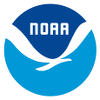Menu
Home > Research by Programs > IPEMF

Sediment Nutrient Analysis Metadata
Sediments for nutrient analysis were collected monthly from May to October with a Sutar box corer (0.5 m2) following the methods of Carrick et al. (2005). Two box cores were taken at each site, and the overlying water was gently siphoned from the sediment surface (leaving approximately 2-4 cm of undisturbed, overlying water). Intact sediments samples (duplicate) were removed from each box core using plexiglass core tubes (12 cm2). Once retrieved, the top 1cm of surficial sediments was extruded through the top of the core tube and placed in a beaker. This layer was diluted to a known volume to create a slurry and then frozen. Subsamples of the slurry (12 ml) were taken for measurement of carbon, nitrogen, phosphorus, and biogenic silica. Carbon and nitrogen were measured with a Carlos Erba elemental analyzer, phosphorus was measured with an Auto Analyzer, and biogenic silica was measured with an Alpkem colorimetric analyzer.
The sole exception to these general collection methods occurred in September (Julian Dates 264 and 265). On these dates, sediment samples for nutrient analysis were collected with a Ponar grab. The top 1 cm of sediment was scraped from the surface of the sample and placed into dark polyethylene container. The sediment samples were frozen until freeze-dried, then kept dessicated in a freezer until analysis.
Carrick, H. J., Moon, J. B., and Gaylord, B. F. 2005. Phytoplankton dynamics and hypoxia in Lake Erie: a hypothesis concerning benthic-pelagic coupling in the central basin. J. Great Lakes Res. 31 (sup 2):111-124.
Contact Information:
Tom Nalepa
NOAA-GLERL
4840 S. State Rd.
Ann Arbor MI 48108-9719
Phone: 734-741-2285
Email:


